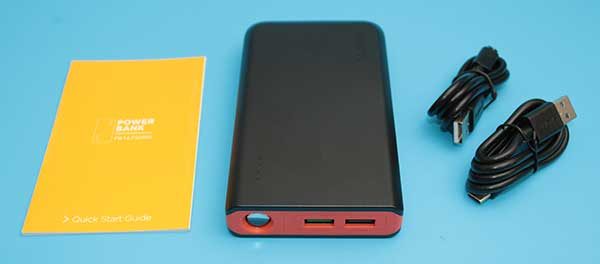
Getting a low battery warning when you’re no where near a power outlet feels like the end of the world to a gadget nerd. That’s why power banks are a popular product category and why EasyAcc is a company who makes these types of devices for mobile Gadgeteers. Let’s take a quick look at their new EasyAcc MegaCharge Doubin 16750mAh USB-C Power Bank.
What is it?
The EasyAcc MegaCharge Doubin 16750mAh USB-C Power Bank is a portable charger for devices that can charge through a USB cable. Such devices include smartphones, smart watches, fitness trackers, and more.
What’s in the box?
EasyAcc MegaCharge Doubin 16750mAh USB-C Power Bank
micro USB cable
Type-C USB cable
Quick start guide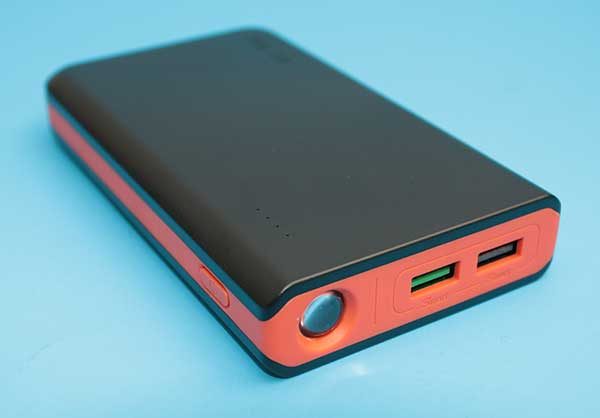
If this device looks familiar to you, you have a good memory because we’ve recently reviewed another EasyACC power bank that looks incredibly similar. Jason Haas reviewed the EasyAcc Quick Charge 3.0 20000mAh Power Bank back in April. That back up battery is a physically larger version and larger battery capacity version of the EasyAcc MegaCharge Doubin 16750mAh USB-C Power Bank that I’m going to show you today. Why would you want a smaller power bank when there’s a larger version available? Weight, bulk, smaller hands, smaller gadgets? Any number of reasons really.
Hardware specs
Capacity: 16750mAh × 3.63V = 60.8 Wh
Battery Cell Type: 18650 Lithium Battery
Type-C Input: 5V / 3A
Micro USB Input: 5V / 2A
Total Input: 5V / 5A (max)
Green Output (Quick Charge & Latest Smart Charge): DC 5-6V / 3A, 6-9V / 2A, 9-12V / 1.5A
Quick Charge Protocols Supported: QC2.0, QC3.0, FCP
Black Output (Smart Charge): DC 5V / 3A (max)
Size: 135 × 76 × 22.8 mm / 5.3 × 3 × 0.9 in
Weight: 308g / 10.9 oz
Design and features
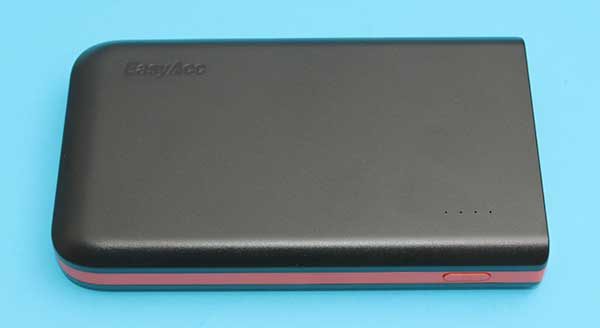
The MegaCharge is a black and orange plastic sandwich. The top and bottom are black with an orange center.
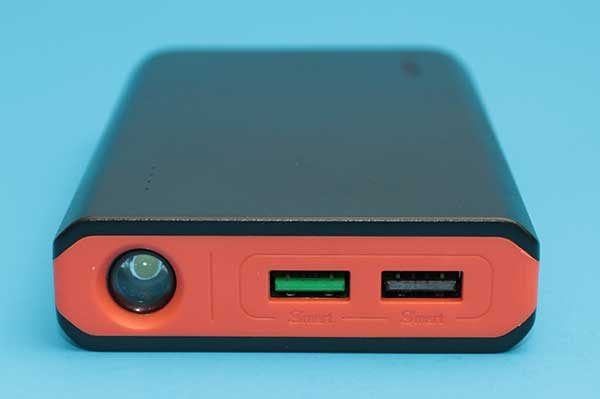
There are two USB outputs on the end and an LED flashlight which is a handy feature.
The Green output has Quick Charge 2.0 and 3.0 capabilities, and the other output is considered a smart charge port that makes sure the device you’re charging gets the most power it can safely accept.
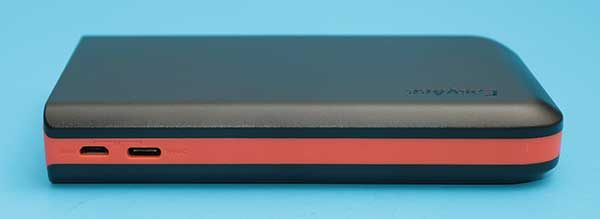
On the side of the MegaCharge are two inputs. There’s a micro USB and a Type-C USB input. These inputs are used to charge the MegaCharge’s 16750mAh battery.
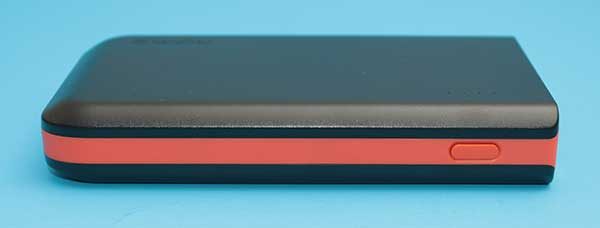
On the opposite side is a button that will let you check the remaining battery capacity of the power bank and will toggle the flashlight on and off with a double click.
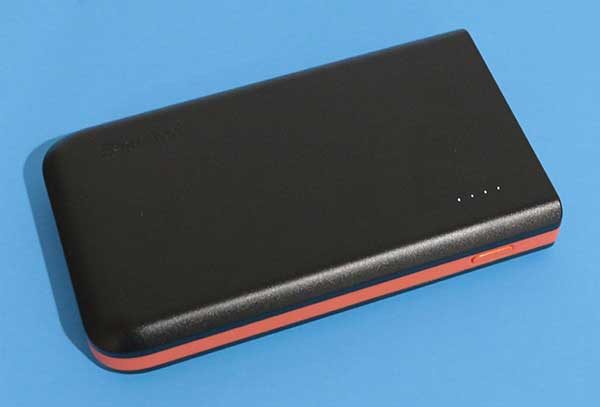
Four tiny white LEDs on the top of the power bank show the battery capacity while the unit is charging another device or when you press the button on the side.
The cool thing about the MegaCharge power bank is the Doubin feature which allows you to charge the power bank quickly when you plug BOTH a micro USB and a Type-C cable into the inputs and use compatible AC adapters. Using two cables will allow the power bank to charge in about 3.5 hours which is up to 60% faster than when using just the Type-C cable which takes 5 hours, with 3A input.
FYI: It’s up to you to find an AC adapter to recharge the MegaCharge because one is not included with the power bank. However, a micro USB and a Type-C cable are included.
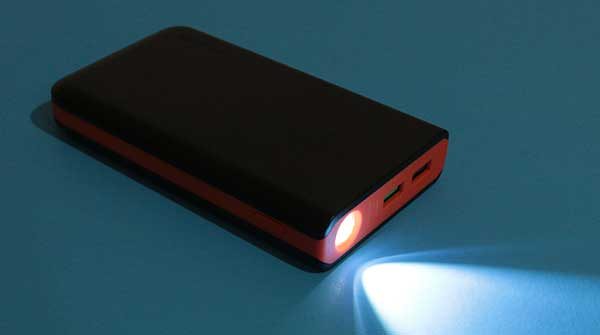
I could not find any details on the flashlight as far as the number of lumens that it emits, but it’s bright enough to be used as a small flashlight so you won’t need to remember to carry a separate flashlight with you.
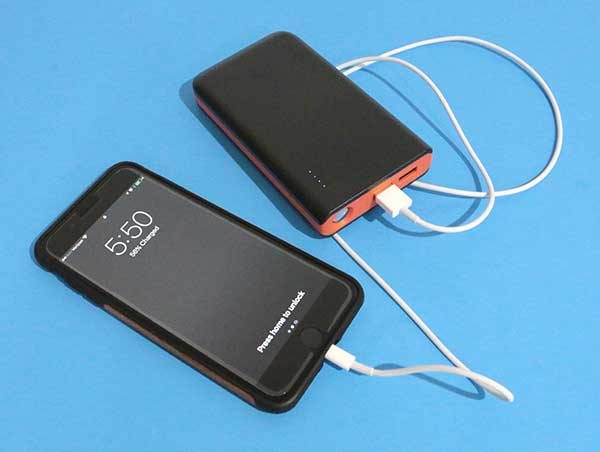
I did all of my testing of the EasyAcc MegaCharge Doubin 16750mAh USB-C Power Bank with an iPhone 7 Plus and an iPad Pro 10.5. I tested individually using the green Quick Charge output port.
Day one
12:13pm iPhone 7 Plus battery at 20%. Plugged into a fully charged EasyAcc MegaCharge
12:33pm iPhone 7 Plus battery at 38%.
1:04pm iPhone 7 Plus battery at 64%.
1:40pm iPhone 7 Plus battery at 90%.
1:56pm iPhone 7 Plus battery at 96%. Removed from EasyAcc MegaCharge. EasyAcc MegaCharge still has all LEDs lit up when doing a battery capacity check.
iPhone 7 Plus battery from 20% to 96% in 1 hour and 43 minutes.
Next day over 24hrs later
2:45pm iPad Pro 10.5 battery at 20%. Plugged into EasyAcc MegaCharge which still had all 4 LEDs lit up.
3:51pm iPad Pro 10.5 battery at 49%, EasyAcc MegaCharge down to 3 LEDs.
4:15pm iPad Pro 10.5 battery at 60%, EasyAcc MegaCharge down to 2 LEDs.
5:30pm iPad Pro 10.5 battery at 91%, EasyAcc MegaChage at 2 LEDs. Removed from charger.
iPad Pro 10.5 battery from 20% to 91% in 2 hour and 45 minutes.
Day three
7:45am iPhone 7 Plus battery at 25%, EasyAcc MegaCharge at 1 LED.
9:00am iPhone 7 Plus battery at 80%, EasyAcc MegaCharge at 1 LED flashing.
9:45am iPhone 7 Plus battery at 96%, EasyAcc MegaCharge completely drained.
iPhone 7 Plus battery from 25% to 96% in 2 hours.
So a fully charged EasyAcc MegaCharge was able to almost completely recharge an iPhone 7 Plus at 20-25% two times and an iPad Pro 10.5 at 20% once.
Recharged the EasyAcc MegaCharge in about 3 hours and 45 minutes using both a micro USB and Type-C cable.
Final thoughts
The MegaCharge Doubin 16750mAh USB-C Power Bank from EasyAcc is an easy to use external battery that can recharge your USB enabled gadgets multiple times when you’re on the go. There are many power banks on the market, and this one from EasyAcc offers some extra features like the built in flashlight and Doubin battery recharge feature that make it worthy of a 2nd look.
It’s a great accessory for travelers, campers, and anyone else who finds themselves away from regular power outlets.
Source: The sample for this review was provided by EasyAcc. Please visit their site for more info and Amazon to order.
Product Information
| Price: | $37.99 |
| Manufacturer: | EasyAcc |
| Retailer: | Amazon |
| Pros: |
|
| Cons: |
|
Filed in categories: Reviews
Tagged: Batteries and Chargers, External power supply
EasyAcc MegaCharge Doubin 16750mAh USB-C Power Bank review originally appeared on The Gadgeteer on August 6, 2017 at 2:15 pm.
Note: If you are subscribed to this feed through FeedBurner, please switch to our native feed URL http://the-gadgeteer.com/feed/ in order to ensure continuous delivery.






















